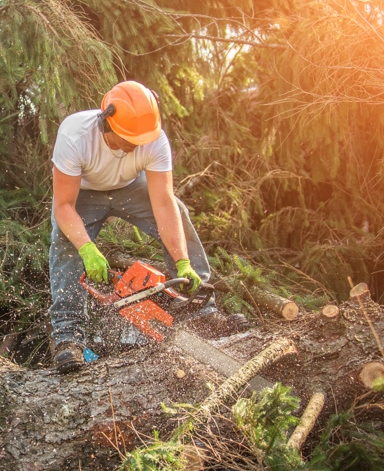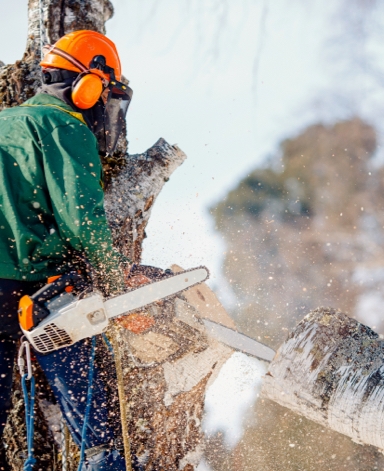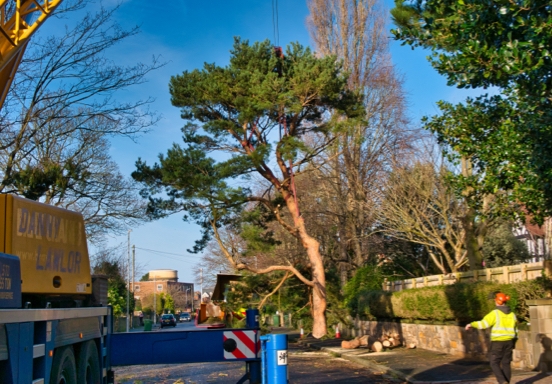WHAT IS TREE REDUCTION
Tree reduction is the process of carefully pruning and removing branches from a tree to control its size and shape, promote healthy growth, and reduce the risk of structural damage. This service is often necessary for trees that have become overgrown or are posing a safety risk to people or property.
Tree reduction is an important tree maintenance service that involves reducing the size of a tree by removing some of its branches and foliage. It is typically done for safety reasons, to improve the appearance of a tree or to make it easier to manage. In this article, we will discuss what tree reduction is, the benefits of this service, and how to find a professional service provider in the UK.
What is Tree Reduction?
Tree reduction is the process of removing some of the branches and foliage of a tree to reduce its overall size. This service is typically done for safety reasons, to improve the appearance of a tree or to make it easier to manage.
Benefits of Tree Reduction
-
Safety: Tree reduction is often done for safety reasons, to remove branches that may be hazardous to people or property. This can help prevent accidents and damage caused by falling branches.
-
Aesthetics: Tree reduction can improve the appearance of a tree, making it look more balanced and aesthetically pleasing.
-
Health: Removing dead or diseased branches can help improve the health of a tree by preventing the spread of disease or insect infestations.
-
Maintenance: Tree reduction can make it easier to maintain a tree by reducing the amount of pruning required and making it easier to access hard-to-reach branches.
How to Find a Professional Service Provider
When looking for a professional tree reduction service provider, there are a few things to consider:
-
Experience: Look for a service provider with extensive experience in tree reduction. Experienced professionals will have the knowledge and expertise necessary to perform the work safely and effectively.
-
Equipment: Professional service providers should have access to specialized equipment that ensures the reduction process is done correctly and efficiently.
-
Safety Procedures: Ensure that the service provider you choose follows strict safety procedures to ensure the safety of their workers and anyone in the vicinity.
-
Insurance: Ensure that the service provider you choose has insurance that covers any damage that may occur during the reduction process.
HedgesNTrees Tree Reduction
Reducing the size of a tree in a garden is something we do a lot of. A crown reduction refers to a process by which we reduce the spread and height of all the branches on the tree. This branch arrangement, however big or small is known as the ‘crown.’
There are two different approaches we can take when reducing the size of the crown of a tree.
A ‘thin to reduce’ is a method which only skilled experienced tree surgeons (such as Hedgesntrees!) undertake. This involves identifying and removing the leading stems which stretch out through the canopy. Removing these and retaining the emerging smaller stems will result in a softer, more natural finished appearance. This method tries to avoid shortening branches in favour of removing them completely and leaving the smaller branches. This method doesn’t stress out the tree as much as other methods and providing the branches that have been removed are of relatively small diameter the tree will do a good job of sealing those pruning wounds.
A more common method, and sometimes an unavoidable one is a ‘topping’ of the crown. This method involves shortening every branch in the crown back to a bud or healthy leaf point. This method is employed when the above mentioned is not appropriate, ie. a hard/heavy reduction. A nice, neat finish is achievable but it promotes vigorous new re-growth as the tree attempts to replace the leaf it has lost. After a year or two the tree will be heavily laden with leaf creating a really dense crown which will need to be thinned or re-reduced on a quite regular basis.
The decision to reduce the size of the crown of your tree is usually down to a few common factors.
To increase light levels into your garden or planted borders. Trees can cast a lot of shade onto your garden and inhibit the growth of other plants or shrubs. A crown reduction will instantly reduce the trees ability to cast shade. As to how much the tree is reduced by is largely down to your own preference. A general rule is the more heavy the reduction the more light will be let in but the less it looks like a tree when we’re finished with it!. There is often a delicate balance to be struck here. A detailed conversation between us and the client at the initial site visit can establish what’s best to increase light levels but with the aesthetics and health of the tree in mind.
A reduction is often undertaken if the tree is growing into a neighbouring garden. If a large section of the crown overhangs a neighbour’s garden this can cause problems. Legally, the neighbour is quite entitled to prune all overhanging branches back to the boundary line fencing, unless the tree has a Tree preservation order on it or if your property is in a conservation area. This pruning works can wreck the shape of the crown and leave large pruning wounds which can be entry points for infection. What’s often preferable is a conversation between the neighbours to reach a compromise. If the neighbour is accepting of some over-hang then the tree can have a crown reduction to the entire crown and still look balanced. This is a far better outcome than a huge section of the crown being removed back to the fence-line, and nothing else.
Over time, trees can just outgrow their environment. If you have a small garden and a tree you love has just grown too big then a crown reduction is the only approach. We take great care to prune the tree so as to leave you with a symmetrical, balanced crown. When we are working within the tree it can be difficult for us to envisage what shape we are creating. We are working within a 3D structure with a random branch arrangement. It takes years of experience to be able to build a picture of what to do and where exactly to prune the branches to leave a lovely finished shape. This is something that can’t be taught at college and only comes with years of climbing. We have that experience.
A crown reduction can be applied to a perfectly healthy tree to prevent branch failure. With some trees such as Cedars or Pine trees, the branches can become a bit too heavy as the tree
matures. That is to say, the tips of the branches are so laden with needles that there is a distinct risk of branches snapping out in high wind. During the winter if snow settles on the branches and adds extra weight to an already heavy branch this can fail. So if there is a tree in your garden where children often play beneath it or it overhangs a public footpath or you park your car beneath it then sometimes a crown reduction is a good idea simply to reduce end-weight on the branches. A crown reduction will remove a pre-agreed length of the branch which is laden with most amount of the leaf. This will result in less stress on the branches, less movement in high winds and a safer more stable crown.
If you’re lucky enough to have multiple mature trees in your garden then over time these trees can start to inhabit each other’s space and start to compete with each other for light, space, water and nutrients. This isn’t a good situation for your trees as their growth will start to become denuded and un-natural. If selective tree removal isn’t an option then a crown reduction is.
Occasionally, a tree reduction is necessary due to no fault of the tree itself. If the tree’s branches are growing too close to a building or house there is no choice but to shorten these branches. A common problem we see is a tree growing through phone lines. The branches rub against these phone lines and cause damage to both the tree and the phone lines. Again, in this situation, there’s no alternative but to reduce the size of the crown of the tree. This can sometimes be done sympathetically so as not to ruin the natural shape of the crown of the tree.
Reducing the height of conifers is very common. It's not really a crown reduction more a height reduction. When this is applied to conifers it always looks like the conifer has been ‘beheaded’. A flat top reduction is the only option and the tree always loses its natural conical form. The top of the tree can’t be shaped round in a nice mushroom-type shape like deciduous trees as it’ll expose the dormant growth within the crown. That’s always a consideration when deciding what best to do with overgrown conifers, pine and spruce. We can advise and manage your expectations as to what we leave you with!
Tree Reduction Services Get in Touch
If you require professional tree reduction services, get in touch with us today. We are a team of experienced arborists who are committed to providing safe and effective tree maintenance services. Our team uses specialized equipment and follows strict safety procedures to ensure the highest level of service for our clients. Contact us today for a consultation or to schedule a service appointment.


CONTACT US FOR EXPERT TREE REDUCTION SERVICES
Get in Touch TREE REDUCTION
FAQS
How much shall cut off my tree?
The amount of material you remove from a tree is down to a few factors. Firstly, personal preference. We always engage with the customer and ask what their thoughts are. Do you want a very light, sympathetic reduction?, or a very hard prune?. There is no point in us not taking on board the customers own requirements, if we apply a light reduction when the customer wants a heavy reduction that’s no good for either party!. So we listen to what the customer’s expectations are. Then we advise accordingly.
Secondly, some trees will tolerate a heavy prune, some won’t. So we will take the customer through the options based on what’s best for that particular tree type.
How often will I have prune my tree?
It's important to understand that with pretty much all deciduous trees once you apply a crown reduction you enter into a program of future maintenance works. It's unrealistic to think that once a tree has been reduced that’s the last you’ll hear of it. Crown reductions will invariably promote vigorous new regrowth. If that new growth is left to grow unchecked for many years you’ll have a much bigger, dense tree than you started with!. So we advise that you have to be aware that every 3-5 years you’ll have a repeated expense of re-reducing the crown by removing all the longest most established new stems and leaving the emerging ones.
